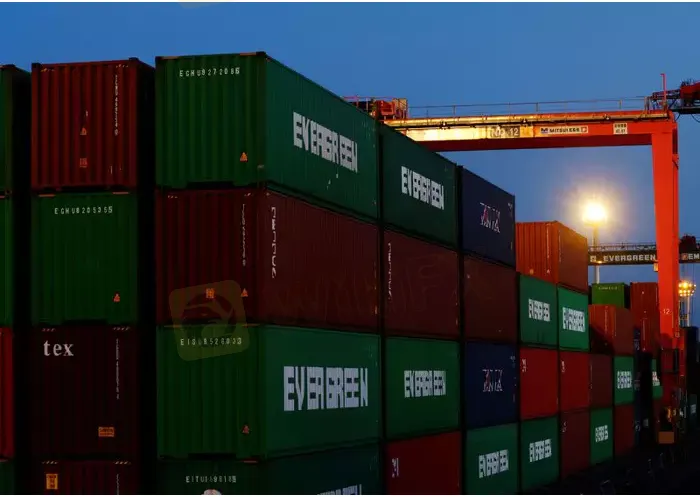简体中文
繁體中文
English
Pусский
日本語
ภาษาไทย
Tiếng Việt
Bahasa Indonesia
Español
हिन्दी
Filippiiniläinen
Français
Deutsch
Português
Türkçe
한국어
العربية
Japan posts $10 billion trade gap in June as energy imports surge
Abstract:Japan ran a trade deficit for the 11th straight month in June as high energy and other commodity costs pushed up imports, highlighting growing economic pressures from a sharply declining yen and global inflation.

apan ran a trade deficit for the 11th straight month in June as high energy and other commodity costs pushed up imports, highlighting growing economic pressures from a sharply declining yen and global inflation.
Imports surged 46.1% in the year to June, Ministry of Finance data showed on Thursday, slightly above a median market forecast for a 45.7% gain in a Reuters poll.
That outpaced a 19.4% year-on-year rise in exports in the same month, resulting in a 1.3838 trillion yen ($9.99 billion) trade deficit, the 11th straight month of shortfalls.
Junes deficit was smaller than the 1.510 trillion yen gap expected in a Reuters poll.
Imports swelled due to a surge in shipments of oil from Saudi Arabia and coal and liquefied natural gas (LNG) from Australia. Imports of LNG from Malaysia and coal from Indonesia posted triple-digit surges, the data showed.
“Import volumes outpaced export volumes across Q2 so net trade should have been a small drag on Q2 GDP (gross domestic product) growth,” said Marcel Thieliant, senior Japan economist at Capital Economics.
“Car exports remain the Achilles heel of Japans manufacturing sector as they were only up 0.4% year-on-year, but that marked at least a pick-up from the 7.9% year-on-year fall in May,” he added.
By region, exports to China, Japans largest trading partner, rose 8.3% in the 12 months to June, recovering from two months of declines on stronger shipments of chip parts. China-bound exports of cars posted a sharp 23.2% year-on-year decline, the data showed.
Shipments bound for the United States, the worlds largest economy, gained 15.7% in June, thanks to stronger exports of medical products.
The Bank of Japan is expected to maintain its ultra-loose monetary policy later on Thursday, a commitment that could lead to further falls in the yen.
While the yen‘s slide against the U.S. dollar and other currencies this year has pushed up import costs, Japan’s economy is still projected to have returned to growth in the second quarter following a decline in January-March.
However, the recovery from the COVID-19 pandemic faces headwinds from slowing global growth, lower exports and persistent supply chain snags.
That has forced policymakers to maintain sufficient stimulus in the economy, going against a global tide of rate increases to rein in rampant inflation.
($1 = 138.4600 yen)

Disclaimer:
The views in this article only represent the author's personal views, and do not constitute investment advice on this platform. This platform does not guarantee the accuracy, completeness and timeliness of the information in the article, and will not be liable for any loss caused by the use of or reliance on the information in the article.
Read more

What the Movie Margin Call Taught Traders About Risk and Timing
The 2011 film Margin Call offers a gripping portrayal of the early hours of the 2008 financial crisis, set within a Wall Street investment firm. While the film is a fictionalised account, its lessons resonate strongly with traders and finance professionals. For one trader, watching the film had a lasting impact, shaping how they approached risk, decision-making, and the harsh realities of the financial world.

Why More Traders Are Turning to Proprietary Firms for Success
Over the past decade, one particular avenue has gained significant popularity: proprietary trading, or prop trading. As more traders seek to maximize their earning potential while managing risk, many are turning to proprietary firms for the resources, capital, and opportunities they offer. In this article, we’ll explore why an increasing number of traders are choosing proprietary trading firms as their preferred platform for success.

Day Trading Guide: Key Considerations
How does day trading balance freedom and precision in fast-moving markets? Learn key strategies to navigate risks and seize intraday opportunities effectively.

What Determines Currency Prices?
The price of currency directly impacts investor returns. Understanding the underlying causes of currency fluctuations can help investors make more informed decisions in the foreign exchange market.
WikiFX Broker
Latest News
Crypto.com Delists USDT and 9 Tokens to Comply with MiCA Regulations
AI Fraud Awareness Campaign: "We're Not All F**ked"
How to Use Financial News for Forex Trading?
Fake ‘cyber fraud online complaint’ website Exposed!
Day Trading Guide: Key Considerations
GMO-Z com Securities Thailand to Cease Operations in 2025
Oil Prices at $90 to $100 Could Push Philippines Inflation Beyond Target
Do More Liquid Currencies Yield Higher Profits?
Trump Media Expands into Crypto with $250M Truth.Fi Investment
NAGA Launches CryptoX: Zero Fees, 24/7 Crypto Trading
Currency Calculator






